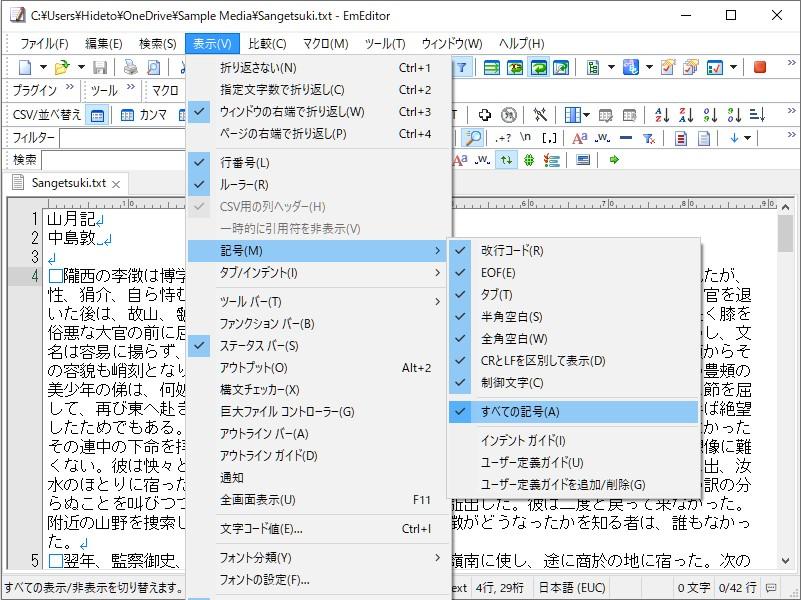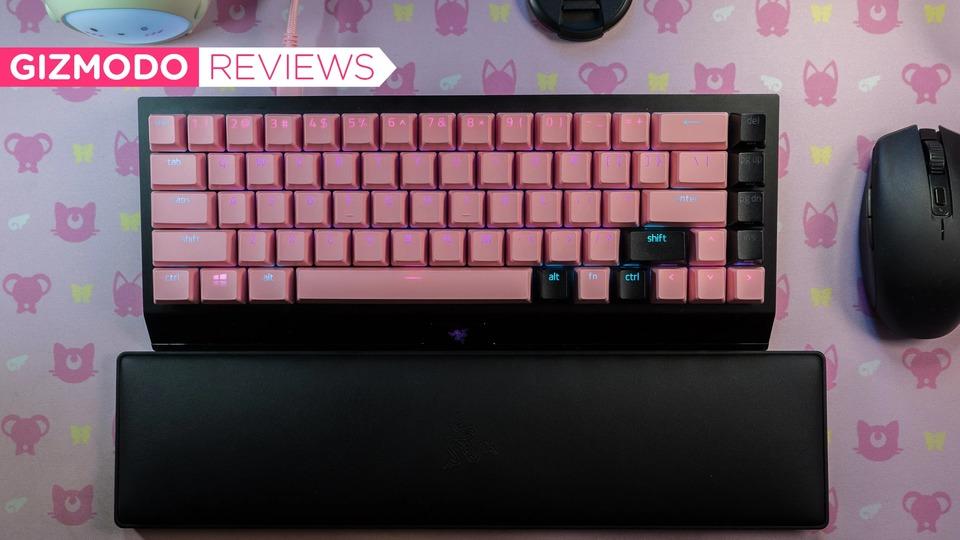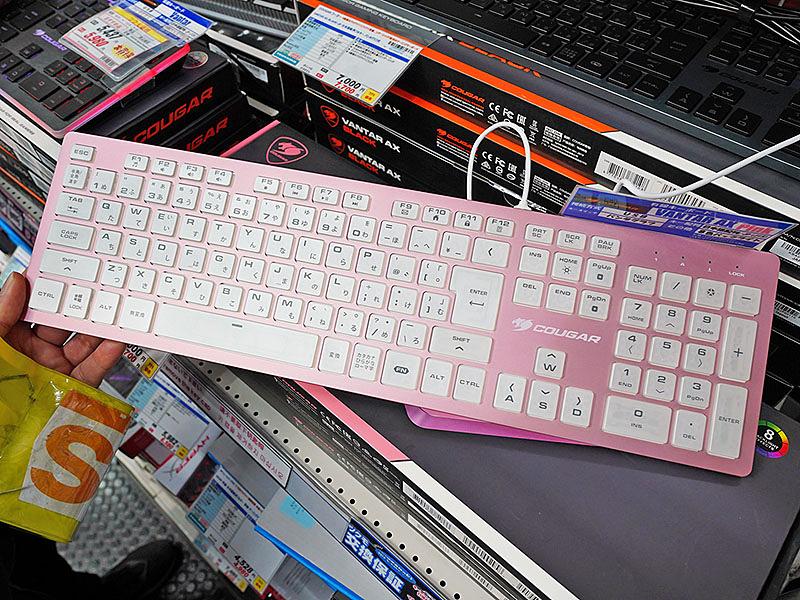Techniques for comfortable use of the editor ~ "EmEditor" reaches the itch
Let's make "EmEditor Professional" even easier to use!
EmEditor Professional in its initial state has no line numbers or rulers, and is relatively plain except for the multi-row display toolbar that hints at the richness of its functions. First, customize "EmEditor" so that you can use it easily. This time, we will continue to explain in the same Q&A format as last time.
[Q.] How can I display line numbers and rulers?
[A.] You can always keep track of line numbers and rulers by activating them in the [View] menu.
Display line numbers and rulers from the [View] menuIf you want to display line numbers and rulers only in the currently used editing mode, select [Basic] in the [Tools]-[Current Settings Properties] dialog. Access the page. Then you can customize the display of line numbers, rulers, etc. The customization done here does not affect other editing modes, so it can meet the needs of not wanting to display line numbers and rulers when editing plain text, but wanting to display them when editing C++ language source code. .
Customize the display of line numbers, rulers, etc. from the [Basic] page of the [Tools]-[Properties of Current Settings] dialog What is edit mode?"EmEditor" can handle various types of text, from plain text (ordinary text data) to CSV/TSV data to programming source code, and the optimal editor settings will be different for each.
Therefore, EmEditor has several built-in editing modes. You can switch between multiple settings, such as "Text" mode for plain text and "C++" for C++ language source code. You can even define your own edit modes.
You can switch the edit mode by double-clicking the edit mode area in the status bar. However, "EmEditor" automatically guesses the editing mode from the extension of the opened file and switches it, so it is rare that you switch the editing mode manually.
Edit mode can be switched by double-clicking the status bar[Q.] Is it possible to wrap sentences with an easy-to-read number of characters?

[A.] In "EmEditor", you can choose from the following four wrap modes in the [View] menu (the bold letters are functions not found in "Notepad"). The keyboard shortcuts are also easy to remember, so let's master them together.
Wrap at specified number of characters (80 characters) Wrap at right edge of window Wrap at right edge of page "Wrap at specified number of characters" is also the default. If you want to customize it, use the [Basic] page of the [Tools]-[Current Settings Properties] dialog mentioned above.By the way, 'Wrap at right edge of page' wraps the text so that it doesn't get cut off when printed. This is a useful option if you are writing memos intended for printing.
【Q.】Is there a way to know the number of characters in the written text?
[A.] "EmEditor" has a function to display the cursor position and the number of characters in the selected text on the status bar. In other words, if you select all the text with Ctrl+A, the number of characters in the text will appear in the status bar. You can also right-click and use the Copy command to copy to the clipboard.
If you select all the text with Ctrl+A, you can see the number of characters in the text in the status barYou can also enable the Tools-Plugins-Word Count option. For example, you can check statistics such as word count in the sidebar. Although I will omit it this time, it can be said that the abundant built-in plug-ins are also attractive of "EmEditor".
[Q.] How can I customize the kinsoku treatment at the beginning and end of a line?
[A.] You can specify the characters you don't want to appear at the beginning of the line and the characters you don't want to leave at the end of the line on the [Kinzoku Processing] page of the [Tools]-[Current Settings Properties] dialog. It is easier to read Japanese if you set lowercase letters such as "ya" and "tsu" and syllables such as "ー" to prohibited characters at the beginning of a line.
[Tools]-[Properties of Current Settings] dialog, [Kinzoku Processing] page[Q.] Can I make the toolbar buttons larger and easier to see?
[A.] If the toolbar buttons are too small to see on a high-resolution display, etc., access the Customize dialog from the [Tools]-[Change Toolbar] menu and select the [Use large icons] option. It should be ON.
Accessing the Customize Dialog from the [Tools]-[Modify Toolbar] menu and increasing the size of the buttons[Q.] How can I add buttons for frequently used functions to the toolbar?
[A.] The top toolbar can be customized by the user (it is also possible to create a new one), and you can add or delete your favorite command buttons. If you double-click the toolbar or select [Toolbar 1] from the [Tools]-[Modify Toolbar] dialog and press the [Customize] button, a dialog for replacing the buttons will be displayed.
Add/remove command buttons of your choice to the toolbar






